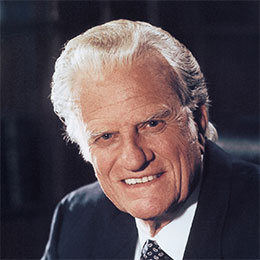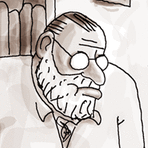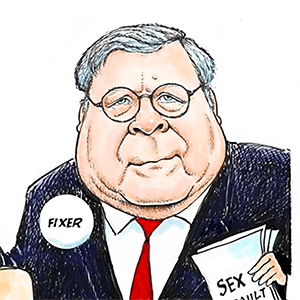C-Force: Does Lowering Nicotine in Cigarettes Elevate the Smoking Issue?
According to World History Encyclopedia, the act of smoking tobacco "in the Americas goes back over 1,000 years when natives of the region chewed or smoked the leaves of the plant," which grew wild but would eventually be cultivated and ultimately commercialized globally. Despite all we know of the habit's association with death and disease, it continues to thrive despite years upon years of warnings of its danger to public health.
When we talk about tobacco, we are essentially talking about nicotine. According to the National Library of Medicine, among the many hazards nicotine consumption poses are "an increased risk of cardiovascular, respiratory, gastrointestinal disorders" and "decreased immune response," as well as impacts on "reproductive health" and "cell proliferation." It is also highly addictive and potentially causes cancer.
"It is unacceptable that after decades of research and proven tobacco control efforts, tobacco use is still the leading cause of preventable death and disease in the U.S." says Harold Wimmer, president and CEO of the American Lung Association. Concerning the organization's 2024 "State of Tobacco Control" report, he states that "the tobacco industry will do anything to protect their profits at the expense of public health, so the White House must focus on implementing lifesaving policies and push back."
In a recent example of pushing back, the Food and Drug Administration announced a proposed rule to reduce, though not eliminate, levels of nicotine in tobacco. If implemented, the proposed plan would limit nicotine in "nearly all" combustible tobacco products. Reports USA Today's Ken Alltucker, such a reduction "was first proposed under Trump's earlier administration by then FDA Commissioner Scott Gottlieb." Commenting on the announcement, Gottlieb said he views the FDA proposal as "an important step in realizing a broader vision" of, as NBC News' Erika Edwards puts it, "how the agency can use its authority to help smokers transition away from combustible cigarettes."
"The proposed rule doesn't ban nicotine but lowers the amount allowed in cigarettes, cigarette tobacco, roll-your-own tobacco and most cigars to 0.7 milligrams per gram of tobacco," reports Alltucker. This lower amount would be smaller "than what's on the market today and potentially low enough to prevent addiction."
Brian King, director of the FDA's Center for Tobacco Products, said in a statement that "this proposal allows for the start of an important conversation about how we meaningfully tackle one of the deadliest consumer products in history and profoundly change the landscape of tobacco product use in the United States."
It is important to point out what is not covered by this proposed action. Reports Edwards, "If the rule is finalized, companies would have two years to make necessary changes. ... The FDA's proposal does not include e-cigarettes, other vape products, hookahs, smokeless tobacco products or nicotine replacement pouches." In fact, the proposed rule does not ban nicotine. It merely lowers the amount allowed in cigarettes. The proposal also does not mean that vapes and other products not covered under the new proposal are safe. "E-cigarettes, for example, are known to contain other toxic chemicals that can contribute to asthma, lung disease and heart disease," Edwards adds.
While Wimmer agrees that "making tobacco products nonaddictive would dramatically reduce the number of young people who become hooked when they are experimenting," he also feels that "to fully address the toll of tobacco on our nation's health and across all communities, we urge the FDA to reduce nicotine to nonaddictive levels in all tobacco products, including all cigars, hookah and e-cigarettes." Of special concern to me, when it comes to young people -- long a target of the tobacco industry -- is the recent introduction of nicotine pouches.
As pointed out in a Reuters report, the proposed rule also excluded nicotine pouches. They are generally small, white pouches filled with nicotine powder and provocative flavoring designed to be placed discreetly between the top lip and gum, like chewing tobacco. As the Centers for Disease Control and Prevention points out, "there are no safe tobacco products, including nicotine pouches." Because of the product's discreet nature, it can be difficult for a parent or a teacher to detect.
Truth Initiative is the nation's largest nonprofit public health organization dedicated to preventing youth and young adult nicotine addiction. In a recent report, they had this to say about oral pouches: "Like many youth-appealing e-cigarettes, oral nicotine pouches come in a variety of flavors including fruit, mint, coffee, cinnamon and more. They also come in a variety of nicotine strengths, with some containing high concentrations of nicotine. ... Their appealing flavors have raised concerns."
While the FDA authorizes Zyn, the most popular brand of nicotine pouches, citing lower risk than cigarettes, the CDC also notes that "more research is needed to better understand the short- and long-term health effects of using nicotine pouches."
According to the CDC, "nicotine in adolescence can harm the parts of the brain that control attention, learning, mood, and impulse control."
Adding to concern about the proliferation of nicotine pouches, an American Heart Association report states that "young people are particularly drawn to these products because of their bold flavors including mint or fruit, different nicotine concentrations, and because they can be used without adults noticing. Adults may like the pouches because they offer the 'freedom' to be used anywhere, even in smoke-free places."
The AHA also stresses that beyond FDA-authorized products, "an illicit market has exploded. The Centers for Disease Control and Prevention estimates that more than 6,000 different e-cigarette products are available for purchase in the U.S. So, most of the cigarette devices and flavors available in convenience stores, gas stations, smoke shops and other retail outlets -- including many of the most popular brands -- are being sold illegally. ... To protect kids from flavored e-cigarettes, it is vital to address this illicit market."
Reducing the level of nicotine allowed in combustible tobacco products may be a step in the right direction, but it seems clear to me that a heck of a lot more needs to be done in protecting public health when it comes to tobacco products.
========
Follow Chuck Norris through his official social media sites, on Twitter @chucknorris and Facebook's "Official Chuck Norris Page." He blogs at http://chucknorrisnews.blogspot.com. To find out more about Chuck Norris and read features by other Creators Syndicate writers and cartoonists, visit the Creators Syndicate webpage at www.creators.com.
Copyright 2025 Creators Syndicate, Inc.























Comments